
In the self-help book Stitches: A Handbook on Meaning, Hope, and Repair (2013), Californian author Anne Lamott, writes: ‘Maturity is the ability to live with unresolved problems.’ Faced by the devastation of broken promises, failure, pain, and cultural angst, advice on how to live with the ‘unresolved’ sells well. To the tidy-minded, over-confident and despairing the ‘unresolved’ looks different: a mess, a nuisance, a dark pit of despair. Lamott’s analogy of threads to be tied and dropped stitches to be re-sewn is suggestive. The protracted COVID pandemic, the on-going debate about the US presidential election, and the pervasive sense of life on tenterhooks to an uncertain ecological and political future, fuel the ‘unresolved’. This is now more than orchestration without tonal resolution, or an actor’s dramatic pause: this is anguished, corporate uncertainty asking, ‘What comes next?
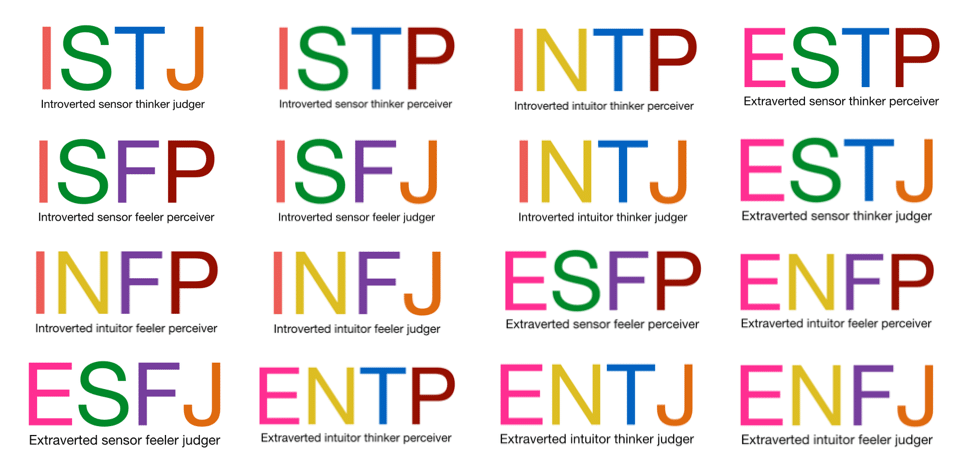
The early 20th-century work on ‘personality’ by the creative American psychotherapists Katharine Cook Briggs (1875-1968), and her daughter Isabel Briggs Myers (1897-1980), added biographical nuance to the Swiss psychiatrist Carl Jung’s (1875-1961) Psychological Types (1923). The Myers-Briggs Type Indicator (MDTI), with its four ‘types of personality’ (prioritised differently in people) has helped many a manager to explain his staff – and why they don’t understand him! According to MDTI, a ‘J’ (decisive, completing) personality finds lack of resolution disturbing – and will want to ‘fix’ it! With the ‘unresolved’ ever-present, grasping its inner dynamics, and its impact on us individually, is at a premium. It may even explain the drive to produce the first coronavirus vaccine or populist pressure to ‘sort’ the US election. ‘We have to overcome our enemy.’ ‘We can’t leave the matter there’. Reflection may lead us to reject Lamott: ‘No, maturity lies in resolving the seemingly unresolvable.’ It may also cause us to restate the obvious: ‘Somethings are inherently unresolvable.’
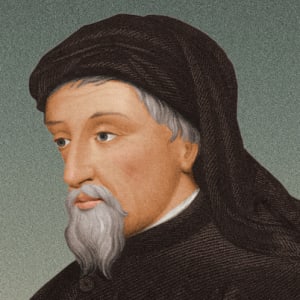
Pondering the unresolved and unresolvable was dear to the heart of the first resident of ‘Poets Corner’, Westminster Abbey; the so-called ‘father of English literature’, Geoffrey Chaucer (ca. 1340-1400). Born to a prosperous family of East Anglian/London ‘vintners’, beside a life of public service and diplomacy, Chaucer wrote (in Latin and Middle English) on philosophy and astronomy (cf. his Treatise on the Astrolabe for his 11-year old nephew) and, famously, poetic tales on human affairs and social relations: The Book of the Duchess (1368-72), The House of Fame (1374-85),a long, visionary work The Legend of the Good Women (ca. 1380), the epic tragedy Troilus and Criseyde (ca. 1385) and the twenty four stories in his magisterial The Canterbury Tales (1387-1400). From the latter, the prologue to The Clerk’s Tale (ca. 1395) sources (adapted) advice we give a dithering friend, ‘Tide and time wait for no man.’ Originally, marriage guidance counselling to an eligible ‘marquis’ the story and saying trace their roots to the finale of the humanist author Giovanni Boccaccio’s (1313-75) Decameron (1353) – via a Latin version by the poet-scholar Petrach, (1304-74).
As elsewhere in The Canterbury Tales, feudal practice and political acuity are sardonically combined in The Clerk’s Tale. Told by an emaciated student of philosophy and theology(!), a dutiful servant urges his master, ‘For thogh we slepe, or wake, or rome, or ryde, /Ay fleeth the tyme, it nyl [will] no man abyde’. Adding, lest he seem impertinent, ‘thogh youre grene youthe floure as yit’ (i.e. ‘though your time of green youth flower as yet’)! Chaucer’s words will resonate with all of us ‘J’ personalities: ‘Get on with it. Tide and time [the same word in Middle English] wait for no man’, or as Benjamin Franklin (1706-90) says in Poor Richard’s Almanack (1732-58), ‘You may delay, but time will not.’ But Chaucer’s words also address every type of personality: ‘Brace for the unresolved.’
Prime Minister Boris Johnson told the British people the other night, ‘Coronavirus doesn’t know it’s Christmas’. Chaucer’s ‘Clerk of Oxford’ has a similar view of time: to him, time has no favourites. Or, as Jesus put it in ‘The Sermon on the Mount’, no-one can by worrying ‘extend their life by an hour’ (Mt. 6.27, Lk. 12. 25). Lockdown and the bedside of a dying relative may suggest otherwise, but life passes at a constant speed. As American poet Henry Wadsworth Longfellow (1807-82) wrote, ‘The tide rises, the tide falls.’ The issue is not time’s passing but its use – and how we handle and unwrap the riddle of the ‘unresolved’.
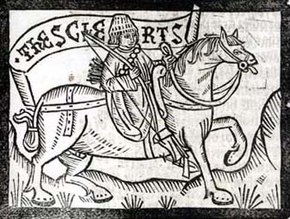
The prologue to The Clerk’s Tale sets the scene for arguably the edgiest of Chaucer’s stories. The vocation of the narrator, an ‘Oxford clerk’, suggests Chaucer meant us to think deeply. The story, mediated to Chaucer by Petrach, is brutal. A handsome lord, Walter, accedes to his servants’ plea (for his own joy and their security). He finds and marries the beautiful Griselda. Though the request honours custom, the lord flaunts it by choosing a peasant girl. At the wedding, Griselda promises to obey her husband. To test this promise, on the birth their two children, Walter whisks them away (purportedly to be killed). Griselda does not protest. As if this were not enough, Walter then forges a papal bull to annul the marriage and has Griselda make the dress for her successor! This too she accepts. All the while, the children have been kept safe in Bologna and are returned to a joyful mother when Walter admits his deception. It is a sombre, agonising, tale redolent, as Boccaccio registered, of the ‘ordeal’ Job endured in the Old Testament. Petrach spiritualises the story to celebrate the virtues of constancy, trust and female submission. The patience of Griselda becomes an honourable ‘type’. In Chaucer, the meaning of the tale is unresolved; although Griselda’s gritty character does not allow us to see ‘unresolved’ here as either impotent or valueless. In fact, Chaucer (ever a mischief and radical) may have been using Griselda to critique the mindless abuse of feudal power and a culture that saw wives as weaker than husbands.
Chaucer’s life also sheds light on The Clerk’s Tale. Like the acute musicologist, who sees many types and uses of the ‘unresolved’ (in chords, themes, motifs and movements), the tale Chaucer tells in his life and work has various templates for the ‘unresolved’. Consider.
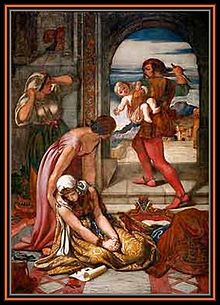
First, like Griselda, Chaucer adapts to survive. We know a surprising amount about his life (and that of his family). Schooled in the ways of courtly etiquette and public service, he studied law at the Inner Temple, London. In June 1367, he became a valet de chambre (or general factotum) to Edward III (1312-77; r. 1327-77) and travelled widely in Britain and Europe on sensitive missions for Edward and his successor Richard II (1367-1400; r. 1377-1400). For his troubles, from June 1374 to 1386 he was ‘Comptroller of Customs’ for the port of London; a prestigious post that enabled his most productive literary period. In 1380, he is named in a ‘rape’ case, but somehow (? bribery) avoided prosecution. During these years (when a French invasion was feared), he was also made a ‘Commissioner for the Peace’ in Kent and a member of the ‘Wonderful Parliament’ (1386). Arguably his most notable diplomatic achievement was to survive King Richard’s cull of the infamous ‘Lords Appellant’ (known associates of Chaucer), who challenged the king’s tyrannical style by going after his ‘favourites’. In 1389, Chaucer became ‘Clerk of the King’s Works’ (property) and later held other significant administrative positions. Here is, then, a busy life of nip and tuck, intrigue and adaptability. Whatever we make of Griselda’s response to her husband Walter’s unreasonable demands (N.B. feudal mores shaped her actions), she pressed on. Like poor Job, she does not allow herself to become a ‘victim’ of adversity. Instead, both Chaucer and Griselda personify the principle that, if brittle people buckle, the adaptable find ways to survive. Like the pause before the great chorus erupts in the 4th movement of Beethoven’s mighty 9th Symphony, in both the unresolved finds resolution in creativity.
Second, again like Griselda, Chaucer embraces silence. The tasks assigned him by his king/s, required every type of relational and diplomatic skill, including discretion, reserve, and the wisdom to know when and how to speak. It is not surprising, perhaps, he turned to poetry to process thoughts he could never express and to satire to make points protocol forbad. Edward III clearly appreciated his literary skills, granting him at one time ‘a gallon of wine a day for the rest of his life’! Richard II paid him the equivalent of £25,000 (US $33,000) for general services, and – reluctantly it appears (cf. The Complaint of Chaucer to his Purse!) – his successor Henry IV (1367-1413; r. 1399-1413) continued the practice. Perhaps it was the story of his father John’s (ca. 1312-66) kidnapping as a boy (by an aggressive aunt), or his own capture during the Siege of Rheims in 1360, or the early death to the plague of John of Gaunt qua Lancaster’s (1340-99) young wife, Blanche (b. 1342), in 1368, or his despair at the state of the church (but not the example of Jesus), that led Chaucer to think deeply and ponder quietly. Life’s awe-full questions can do that: silence shedding light on the unresolved and unsolvable. Lamott is right: we grow in silently processing the unresolved. Why does Griselda seem more mature than Walter? Not because of her submission but because her heavy silence, in Chaucer’s version of The Clerk’s Tale, still speaks deep truth.
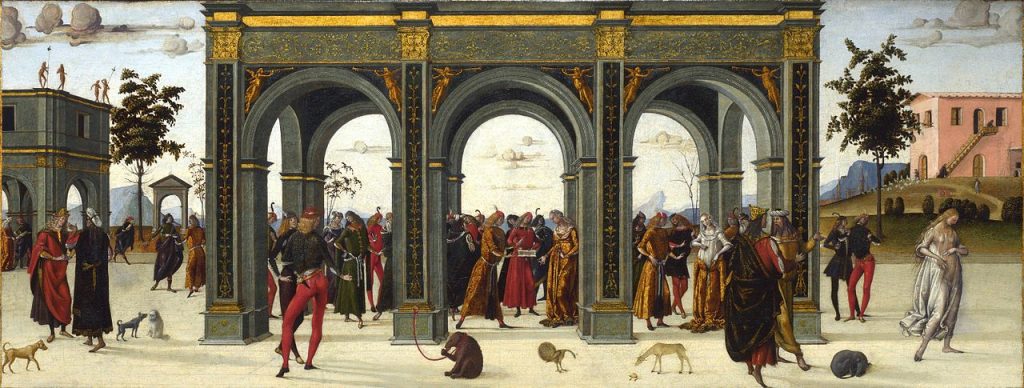
Lastly, Griselda is an(other) example of Chaucer finding exalted themes in earthly places. His method is inductive. Life affords him raw materials. Time and again his biography shaped his writing. The Book of the Duchess, or The Deeth [sic] of the Duchesse, was penned to honour Blanche. On a trip to Italy in 1373 he met Boccaccio and Petrach and drank deep from their skills and methods, refining and standardising the popular continental style (technically, ‘accentual-syllabic metre’) in his characteristic rhyming couplets, use of dialect and wit, and elegant (London) Middle English. The English condottieri (mercenary) Sir John Hawkwood (ca. 1323-94), who Chaucer encountered on another secret royal mission to Italy in 1378, is to many his model ‘knight’ in The Canterbury Tales, a work he (probably) began writing during tumultuous times in Kent and Westminster. If he went on pilgrimage (with so many others at the time) to Santiago di Compostela or was murdered in a court feud, as some claim, his burial in Westminster Abbey was first by right of residency in the Close and then out of respect (when he was moved to ‘Poet’s Corner’). Here is a life – and a death – that connects words and meaning to his time and ours. In ‘Chaucer the narrator’ of his poem Fortune, we hear most clearly the anguish he felt at loss and betrayal, his hope for help from ‘his beste friend’ and ‘That to som beter estat he may atteyne’. In the open-ended, Chaucer clearly found the One who ‘put eternity into the heart of man’ (Ecclesiastes 3.11).
Christopher Hancock, Director
